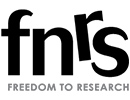The Homunculus that never dies
23.10.2017Currently I am working on an INSOSCI paper about the methodological problem of dual systems or dual process approaches. If you look at what protagonists of those models write about their validity, one notices extreme care. For example, in their introductory article to the ‘Journal of Economic Psychology’ special issue (Vol. 41, 2014) on the topic, Alós-Ferrer and Strack write, among other statements, that the duality “is better seen as a continuous variable”, that “dualities are just simplifications”, or that the systems “are mere collective names for broad classes of interconnected processes”. Yet, in the end of the day the dual systems view is maintained. Why? I think that the reason lies in the survival capabilities of the ‘homunculus’ in the brain, despite massive attacks such as by the philosopher Daniel Dennett. In dual systems views, the homunculus re-emerges like phoenix from the ashes because there is the idea of a reflective system that ‘controls’ the ‘impulsive system’: The rider on the horse. I think that we need to reject this metaphor resolutely, and adopt the framework of ‘neuronal Darwinism’ championed by philosophers such as Dennett and scientifically elaborated in the neurosciences by the Nobel laureate Gerald Edelman. In the INSOSCI project, Bernard Feltz follows this line of thinking, who also once stayed with Edelman as a visiting scholar.
As recent empirical work has shown, even if one thinks in terms of the duality, often the two processes can be shown to happen simultaneously (see, for instance, the overview by Handley and Trippas 2015). That means, as I have already argued in earlier blogs, we should not envisage a generic difference in speed, where the reflective system always comes late. Of course, that might happen, and is also proven by many experiments that demonstrate, for instance, the impact of cognitive load on the differential operations of the systems, but we cannot take this assumption as a universal distinctive feature. Instead, we need to think in terms of a parallel processing model. This model would match with the Neural Darwinism framework: We would envisage perhaps many mechanisms working in parallel, for instance some impulsive, some reflective, and depending on the contextual conditions one of them would prevail in the competition for brain resources and ultimate control over action.
The important consequence of this view is that there is no homunculus anymore, i.e. an instance that ‘controls’ the brain in the sense of a reflective system that would adopt the rational decisions and overcome the irrationalities of the impulsive system, often literally seen as the cortex reigning over the limbic system. Instead, there is a dynamic competitive process between sets of mechanisms that combine groups of neurons together: This is what Edelman calls ‘neuronal group selection’. Under certain conditions, that can imply that one group almost always dominates the choice of actions, but that can change. I think that this view catches Alós-Ferrer and Strack’s notion of ‘continuity’ much better than thinking of only one type of mechanism operating with regard to one type of action, and then assuming a spectrum of types in the dualities.
However, in this view there is still room for reflectivity. If the brain operates as a system of parallel neuronal competition, the question is, what determines the selection? Consider the market as a metaphor: Selection happens via spontaneous competition, but often also in the context of hierarchical structures, such as firms. Firms choose actions in a reflective way. Reflective processes can be easily included as higher-level mechanisms, yet without necessarily involving deliberation or consciousness. A simple case in point is imitation, also in the sense of imitating one’s own actions in the past that are stored in self-images. As Lades argues in the same special issue of JoEP, this can operate in an ‘impulsive’ way, but involves reflection, in the sense of cognitive mappings. Again, we are back with Edelman here, who sees complex mappings across brain regions as an essential aspect of neuronal group selection.
Cited work:
Alós-Ferrer, Carlos, und Fritz Strack. „From Dual Processes to Multiple Selves: Implications for Economic Behavior“. Journal of Economic Psychology 41 (April 2014): 1–11. https://doi.org/10.1016/j.joep.2013.12.005.
Handley, Simon J., und Dries Trippas. „Dual Processes and the Interplay between Knowledge and Structure: A New Parallel Processing Model“. In Psychology of Learning and Motivation, 62:33–58. Elsevier, 2015. https://doi.org/10.1016/bs.plm.2014.09.002.
Lades, Leonhard K. „Impulsive Consumption and Reflexive Thought: Nudging Ethical Consumer Behavior“. Journal of Economic Psychology 41 (April 2014): 114–28. https://doi.org/10.1016/j.joep.2013.01.003.







